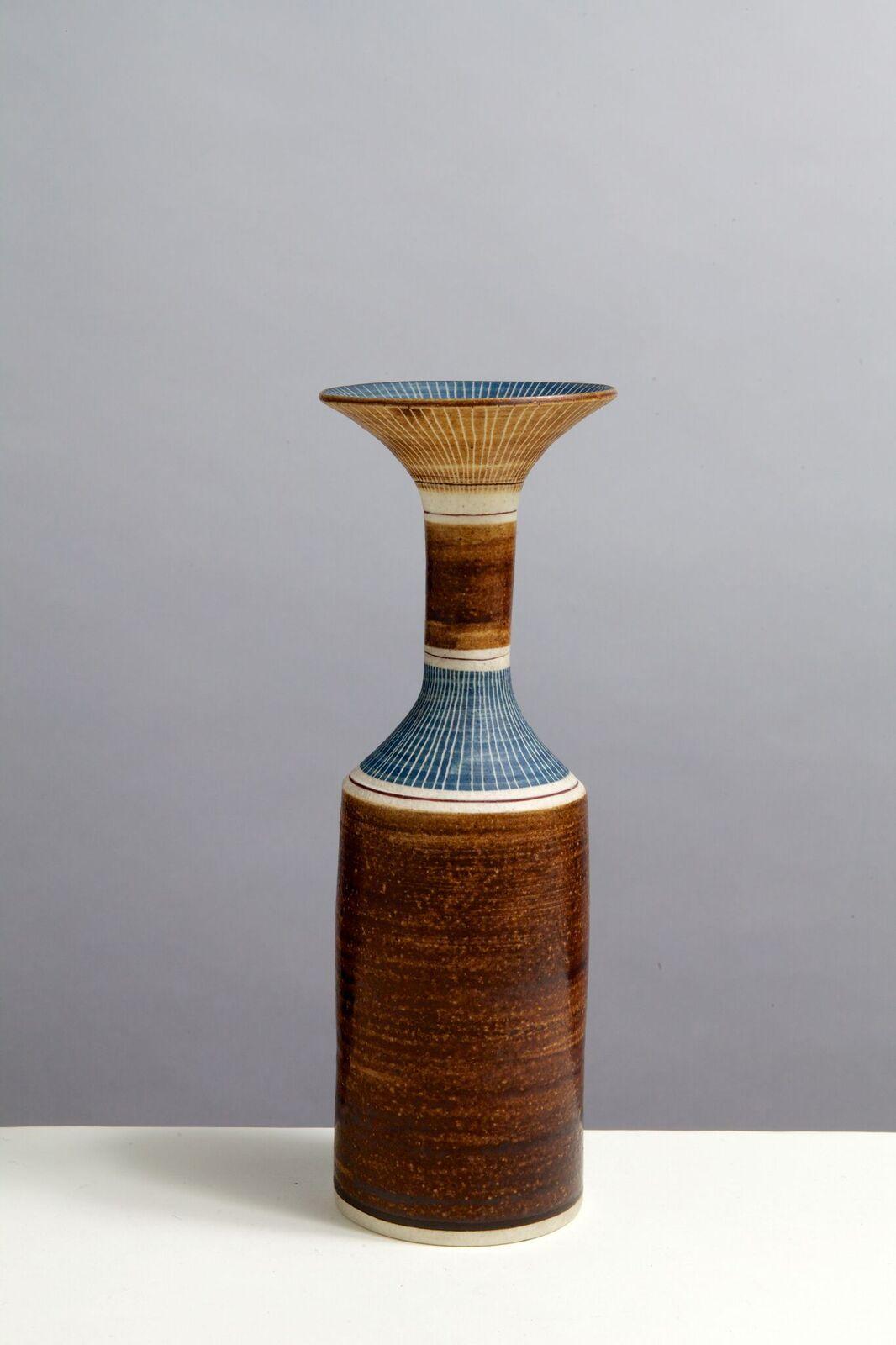THE impulse to cup one of Dame Lucie Rie’s stunning bowls and vases in two hands is strong at a major exhibition of her studio ceramics at the Centre of Ceramic Art (CoCA) at York Art Gallery.
But the graceful forms by one of the most respected potters of the 20th century are, of course, safely behind glass, along with beautifully crafted ceramic buttons.
Rie (1902-1995) is world renowned for her finely thrown and beautifully decorated functional domestic ceramics, which are highly sought by collectors around the world. A small bowl from the 1980s recently broke records by selling at Sotheby’s for more than £125,000.
After she emigrated to the UK from Austria, during the Second World War, Rie began producing ceramic buttons for the fashion industry. This came about because she was broke and the government exempted buttons from rationing, so she created a button factory. These small objects, which Rie and the other Jewish émigrés she employed turned out at the rate of 6,000 a month, brought a large amount of joy to women during the war. And they're exquisite.
In peacetime, only plain buttons were being manufactured. Spotting a gap in the market, Rie began producing beautiful bespoke ceramic buttons in all shapes, sizes and designs, gaining small batch commissions for couture fashion and large orders from department stores, including Liberty and Harrods
The exhibition reveals the findings of new research into this less well-known area of Rie’s practice, displaying hundreds of her buttons alongside many examples of the domestic ware for which she was celebrated. This includes more than 30 loans from a private collection, which are on public display for the first time.
“Lucie Rie is rightly regarded as one of the most influential potters to have practised in Britain," says Helen Walsh, curator of ceramics, at York Museums Trust. "Her simple Modernist style was in sharp contrast to the sentimental idea of pottery being crafted in England during the 1950s and 1960s. Today, her influence shows no signs of diminishing and her studio ceramics are highly sought-after by collectors all over the world.
“This features a wide variety of her ceramic vessels alongside hundreds of her handmade buttons. Rie created these after spotting a gap in the market as many British button factories had been requisitioned for the war effort. The results are beautiful in their simplicity, ornate, yet practical. They are displayed in eye-catching ways and presented with new research into this largely undocumented part of Rie’s work.”
There is an introduction to Rie, her family background, education, her emigration and how she made London her home. When she first arrived in the UK and tried to establish herself as a potter, she discovered that her European style contrasted with work produced by many of the British potters. She asked for advice from Bernard Leach, the leading authority on studio pottery at the time, but found his suggestions of how to adapt her style unacceptable and continued to strive to create a place for her work, staying true to her own aesthetic values.
The exhibition includes an important coffee set made by Leach in the 1940s alongside one of the earliest examples of a teapot and coffee set made when she arrived in London, showing the difference between their styles. There are examples of British domestic wares from an English medieval jug through to work by potters following Leach’s Anglo-Oriental style and the emergence of potters who were beginning to embrace a more Modernist style.
Alison Welsh, head of fashion research at Manchester Fashion Institute, worked with CoCA on a display, which combines hundreds of ceramic buttons with fabrics from the Anthony Shaw Collection. Walsh designed unfinished dresses inspired by Rie’s minimal fashion sense, which are adorned at the throat by a single Rie button, which effectively enhances the button’s beauty and offers poignant echoes of the utilitarian dresses of the war.
One of the émigré potters employed by Rie was Hans Coper, who became one of the most significant studio potters of the 20th century. Thirty pieces by Coper from CoCA’s collection are on display in the exhibition to underline the importance of their relationship.
During the 1960s, Rie was persuaded to do some teaching at Camberwell School of Art and at the Royal College of Art. Although she didn't find teaching easy, she made a strong impression on her students and some of her most important and successful students are included in the show - Ian Godfrey, Mo Jupp, Ewen Henderson, John Ward and Deidre Burnett, all of whom went on to find their own unique voice working with clay. Examples of their work act as visual proof of how Lucie encouraged them to develop their own style, rather than insisting they copy her work.
Vessels demonstrate Rie’s experimentation with form and decoration over the years. They include pieces featuring the meticulously scratched “knitted” decoration and examples of her iconic bowls with rims dripping with iron oxides. A selection of key pieces from the private collectors, Dr Trudie Bergman, WA Ismay, Henry Rothschild and Anthony Shaw, highlight the special relationships Lucie had with the patrons who purchased her work over the years, with each piece offering a story of friendship.
- Lucie Rie: Ceramics & Buttons is at the Centre of Ceramic Art (CoCA) at York Art Gallery until May 12
- W: centreofceramicart.org.uk
- Pictures: Charlotte Graham and Phil Sayer















Comments: Our rules
We want our comments to be a lively and valuable part of our community - a place where readers can debate and engage with the most important local issues. The ability to comment on our stories is a privilege, not a right, however, and that privilege may be withdrawn if it is abused or misused.
Please report any comments that break our rules.
Read the rules here